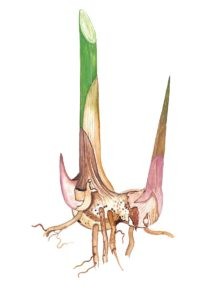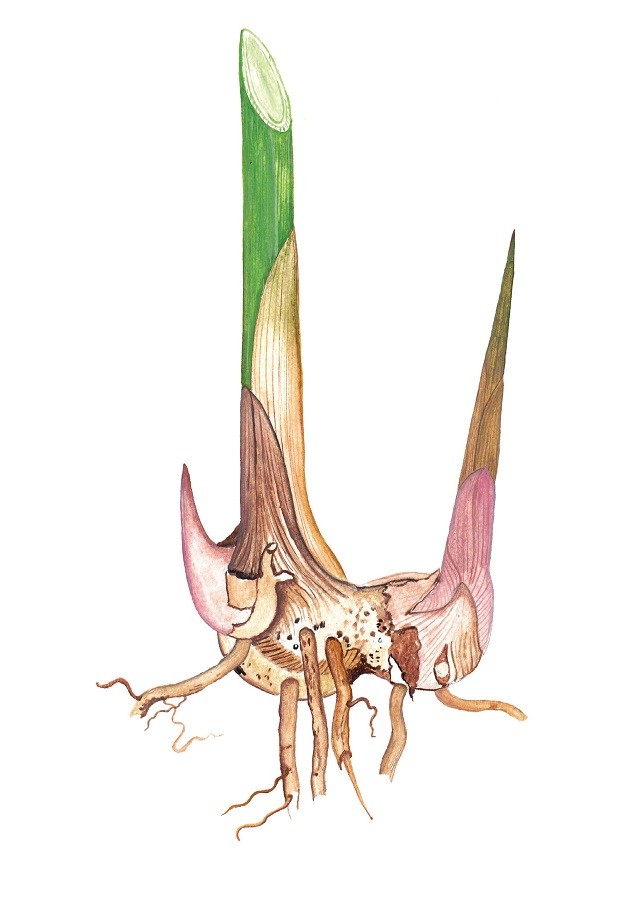Common name: Galanga
Lao name: Kha, kha khom
Alpinia galangal, Alpinia malaccensis
Zingiberaceae Family
In Lao cuisine the milder Galanga is often used rather than Ginger. The two look much alike; a rhizome that sprouts a reed-like stem with simple green leaves and sword-like flowers that vary in colour and size depending on the species. There are many species of Galanga like Kha nyai and Kha noy (big and small Galanga) and Kha pa and Kha ban (wild and cultivated Galanga).
The Galanga rhizome (houa Kha) that you see in the market is generally bigger than Ginger and is paler in colour when cut. It is used in most Lao cooking and it is also added to help with fermentation and add fragrance when making rice whiskey. But while only the rhizome of Ginger is eaten, Galanga shoots and flowers are also eaten, especially in April and May. The shoots (noh Kha), are usually blanched and dipped in a sauce and the flowers (dok Kha) are served with traditional laap. You can also add finely chopped Galanga flowers to salads for a unique taste which is slightly sweet and piquant.
Other species of Galanga, are used by herbalists; van hom (Kaempferia galanga) is supposed to help with aches and pains in the head, van toup moup (Kaempferia augustifolia) is good for a cough. Among the Hmong people, one variety of Kaempferia is considered to be so powerful that it is added to nearly all medicines to make them more effective.
The same variety is used by the Akha people to ward off evil spirits and also to fool those malevolent beings when twins are born. The villagers make a very long rope of the plant, which they call meh and wind it around the entire village as a barrier to keep the bad influences out.

An Alpinia rhizome.
Text by Dr Biba Vilayleck, PTK Resident Ethnobotanist
Drawing by, and copyright owned by, Kongngern Sengdee, PTK Artist



